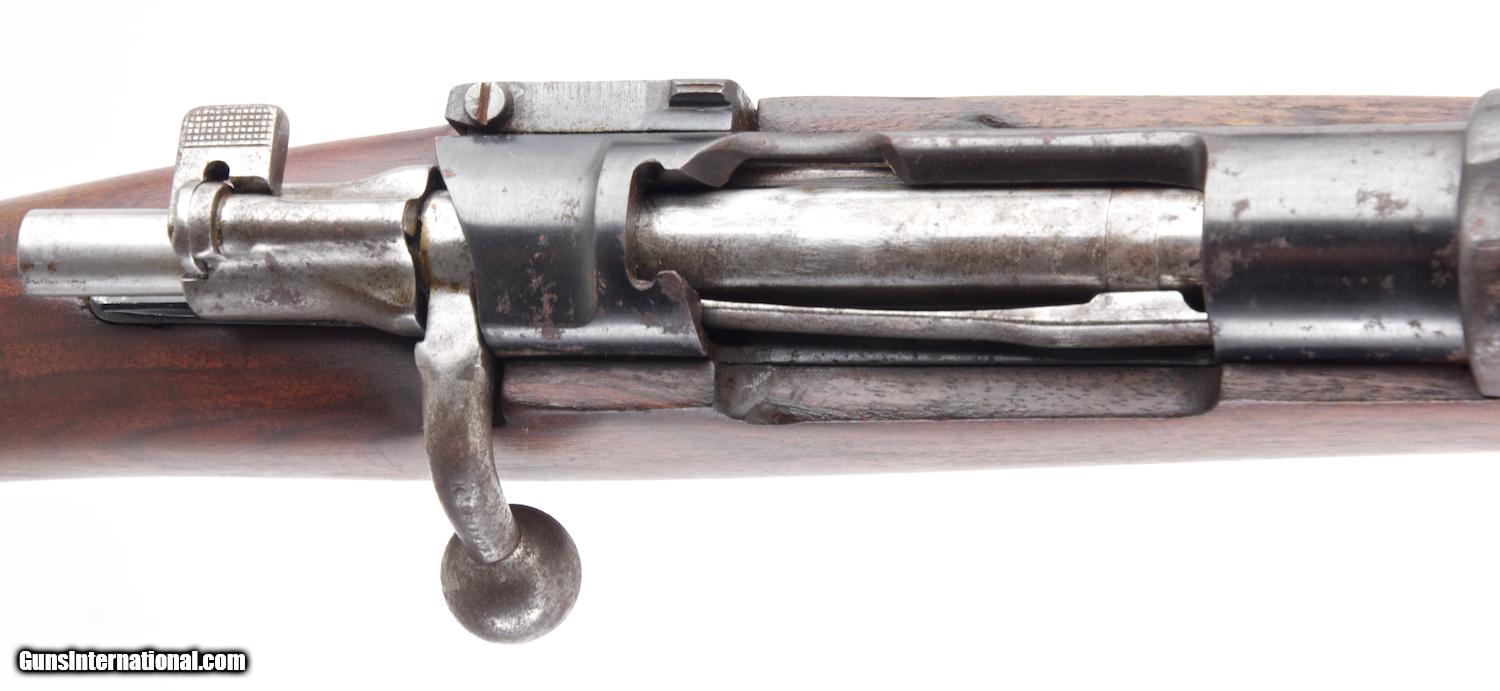
From 'The Standard Catalog of Military Firearms', 2001 edition: '(The M1916 short rifle) was built by Fabrica de Armas in Oviedo, Spain from 1916 to 1951. A shortened version of the Model 1893 rifle with 21. One Night Rate Of Udaya Bhanu. 75 inch barrel and chambered for the 7x57mm cartridge. Rear sight graduated to 2000 meters. Almost full stock with upper handguard.

Sight protectors on front sight. Spanish crest on receiver ring.
Weight is about 8 pounds.' From 'Rifles of the World' 2nd edition: 'Model 1916 short rifle / Mosqueton Mauser Espanol Mo.
All Model 1893's and Model 1916's have a rib on the left side of the receiver wall, and the bolt face is squared off at the bottom. All were originally chambered in 7mm Mauser. Serial numbers usually consist of a single letter, or '2' and a single letter, followed by anywhere from one to four numbers (usually four). Examples: E6578, 2N3375, etc.
1916 / Made by Fabrica Nacional de Armas, Oviedo, 1916-51: and by Industrias de Guerra de Cataluna, Tarrasa, about 1936-39. Total production: Not known.
Chambering: 7x57, rimless. Action: As the Mo.
This was adopted on 14th November 1916 to replace the short-barreled Mo. Contoh Program Database Menggunakan Java on this page. 1895 carbine, which was not suited to the ballistics of the 1913-pattern cartridge.
1916 had a full-depth cutout on the left of the receiver to facilitate reloading from a stripper clip, and additional gas escape holes in the bolt body and chamber side. Ps2 Beatmania Empress Iso there. The original rear sight was a Lange-style pattern. The straight-wrist stock had a single barrel band and a standard nose cap, retained by springs let into the underside of the forend; the bolt handle turned down. A pivoting swivel on the left side of the band was used in conjunction with a bar on the left side of the butt.
A typical rifle had a chamber-mark comprising a simplified form of the national arms above 'LA CORUNA'. Prominent protectors appeared on the front sight block after 1918, and the basic design was upgraded in 1933 in much the same way as the Mo. Conversions: Many surviving Mo.1916 short rifles were altered from 1943-44 onward for the standard German 7.9mm cartridge, owing to the adoption of the M1943.Some guns were given new pistol grip stocks, with a finger groove in the forend and new swivels. Model FR7: This was a conversion of the Mo. 1916 rifles to FR8 standards - 7.62x51 caliber, 18.5 inch barrel.'
Lack of markings, especially the Spanish Coat of Arms could be due to several causes. The rifle might have had its national markings removed when it was sold as surplus, it may have been polished to death to remove rust or nicks in the metal, there may be heavy wear to the metal which was later re-parkerized or reblued, or the receiver may even have been replaced with an unmarked one. Can you detect faint markings on the receiver ring with a magnifying glass under different lighting conditions (light slanted or straight on with sunlight, fluorescent lights, incandescent lights, flashlight)? Faint markings would tend to support the refinishing theory, especially if there is a bit of pitting UNDER the finish. The hole on the receiver side and in the bolt body are an attempt to help with the problem, but nowhere near adequate in the event of case failure. Compare a large ring bolt to the small ring bolt. The large ring bolt has two large holes to redirect the gases down through the magazine.